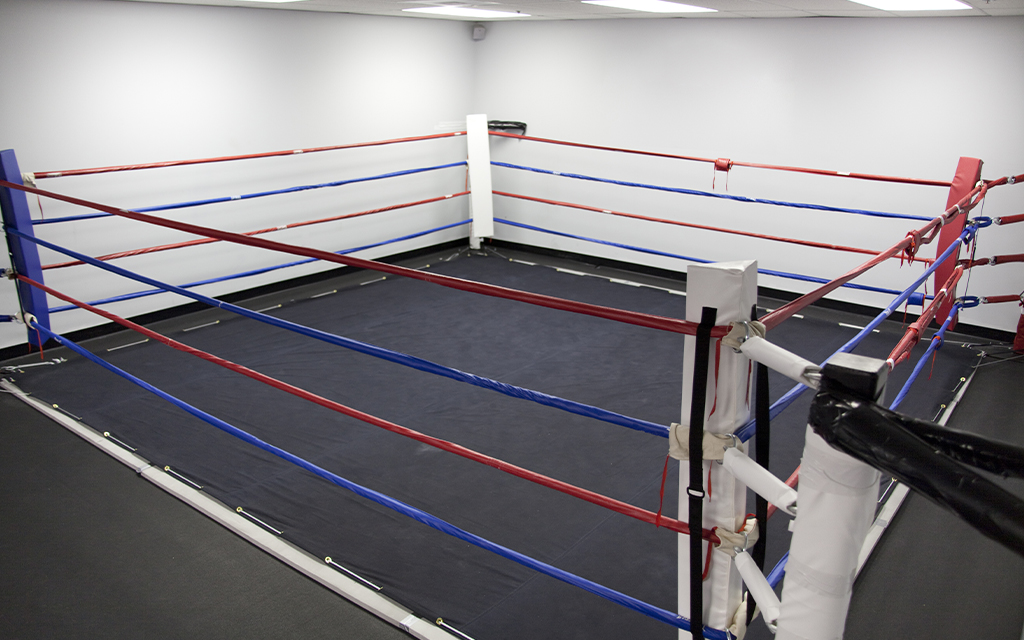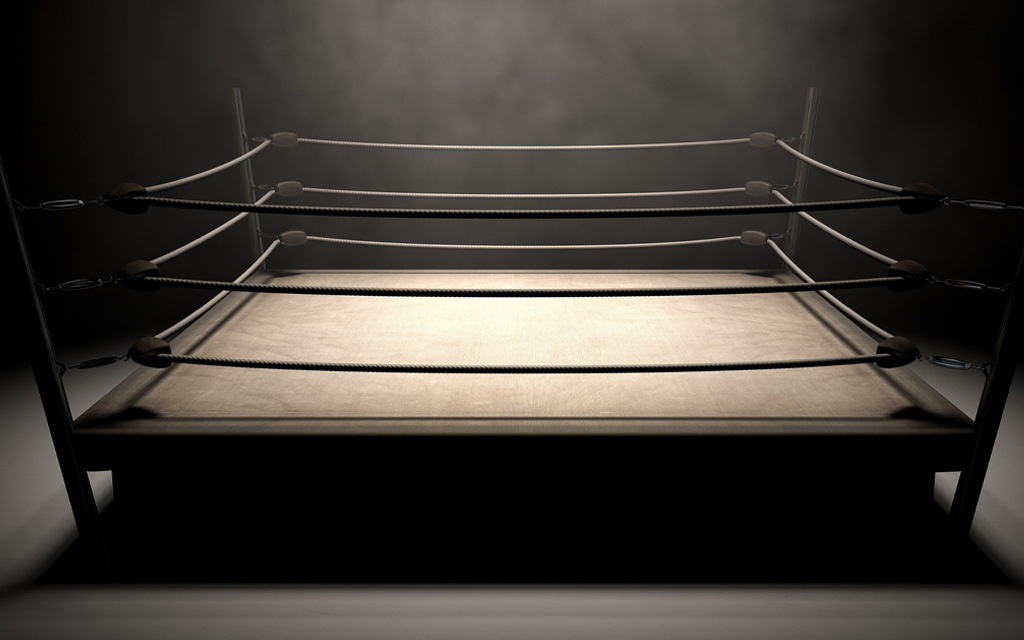When it comes to the world of boxing, there is no better place to witness the ultimate showdown than in the boxing ring. With its sleek design and ropes holding back the intense energy from each fighter, the ring has long been the symbol of one of the greatest displays of power, strength, and endurance known to man. The excitement, rush, and adrenaline that come with each jab, hook, and uppercut are unparalleled. It’s where fighters put their boxing training to the test, where victories are earned, and where champions are born.
If you’re a boxing enthusiast, and as you read this, you can almost feel the adrenaline coursing through your veins. You can picture the boxing ring in your mind, the ropes taunting you to jump in and spar. But let me ask you this: have you ever stopped to think about why we call it a “ring” when it’s clearly shaped like a square? It’s an ironic and puzzling thought, isn’t it? Let’s dive deeper into this curious boxing tradition.
It’s a mystery that has baffled many boxing enthusiasts. The simple explanation behind this mystery lies in the roots of the game. Back in ancient times, when boxing was first introduced, matches were held in circular areas that were surrounded by a crowd.
As the sport evolved, the circular shape became a bit impractical, and they switched to square cubes instead. However, the name “ring” got stuck and has been used ever since. So, to answer the million-dollar question, they are called “rings” because boxing’s roots in ancient times were circular, even if the shape changed later.
If you are a boxing enthusiast like me, you would have also thought of building a boxing ring of your own and practicing whenever and however, you like. But somewhere, the lethargy or the lack of correct knowledge kept you from making one until now. But now, it’s time to drive your passion to success. With our detailed guide on how to build a boxing ring, we have got you covered through all 4 posts. So, get ready to rumble!
Getting to the Root of the Ring
Before diving into the building, let’s touch our roots and get a quick overview of where did boxing originate from. It is one of the oldest and most popular combat sports in the world. Its origin of boxing can be traced back to ancient civilizations such as Egypt, Greece, and Rome, where it was used as a form of entertainment, physical exercise, and a way to train soldiers for battle.
The sport started gaining popularity more than 2700 years ago in Ancient Greece, and since then, it has gone through several changes.
-
Sumerian Boxing
Travel back in time to ancient Sumeria, where the earliest recorded mention of boxing can be found. That’s right, boxing was already making its mark as a popular combat sport thousands of years ago in Iraq. But it wasn’t just in Sumeria where boxing was gaining traction. From Babylonia to Assyria, and even as far as Hittite, depictions of boxing could be found everywhere.
Fast forward a few centuries to Minoan Crete, where the first ever picture of a boxing match was discovered. That’s right, three and a half thousand years ago, boxing was already a well-established sport with fans and enthusiasts worldwide.
It’s fascinating to think about how this ancient sport has survived through the ages and continues to capture our imagination today. From its humble beginnings in the sands of ancient Sumeria to its modern-day glory, boxing has truly stood the test of time.
-
Greek Boxing
Greeks took boxing seriously, creating official bouts with rules and regulations. In fact, the 23rd Olympiad competition in 688 BC marked the introduction of boxing into the Olympics. It wasn’t just about glory, though – there are records of winners receiving rewards such as gold and even livestock!
The boxing matches of ancient Greece were not for the faint of heart. There were no rounds or weight limits, and the matches continued until one fighter could not continue or admitted defeat. It was all about testing one’s strength and endurance to the limit.
But that’s not all – the Olympiad games also featured the combat sport of Pankration. This unique sport mixed boxing and wrestling techniques with other permissible moves such as kicking, holds, chokes, and locks on the ground. It was truly a test of one’s physical prowess and mental fortitude.
-
Russian Boxing
During the Roman Empire, combat sports were popular, but gladiator battles took the spotlight. Boxers began wearing leather thongs around their fists, which eventually evolved into more armored weapons. Romans also invented the circle-shaped boxing ring.
After combat sports were abolished, bare-knuckle boxing resurfaced in Russia, developing into the traditional style of Kulachniy Boy. This form of boxing had various rules, including one-on-one fights, team fights, and “catch drop” fights. These traditional Russian fistfights became part of their folklore, with famous fighters immortalized in poems, art, and folktales.
-
Modern Fist Fighting in London
England saw the resurgence of modern fist fighting in the form of “knuckle boxing” or “prizefighting.” It gained popularity during the reign of James Figg, the first English bare-knuckle champion, between 1719 and 1730.
Early boxing had no rules or protection on fists, and extreme moves like chokes and eye-gouging were allowed. The first rules of boxing were introduced in 1743 after in-ring deaths, but regulations weren’t ratified until 1838 and 1853 as the London Prize Ring Rules.
-
Modern Day Boxing
Boxing has come a long way since its brutal beginnings, and today it’s a popular international sport. Boxers compete in amateur and professional events, including World Championships, Olympics, and Commonwealth Games.
Per the rules of the modern boxing match, the winner is determined when the referee disqualifies a fighter; they resign or cannot continue. Alternatively, side judges use scorecards to elect a winner at the end of a full match. Professional bouts can result in a draw if both fighters receive the same points, but referees must elect a clear winner in the Olympics.
Over the years, the sport of boxing has seen significant advancements in protective gear as well, ensuring the safety and well-being of boxers during training and competition. Modern-day boxers now have access to a range of protective equipment, allowing them to minimize the risk of injury and perform at their best.
Head guards, chest guards, mouth guards, groin protectors, knee wraps, and hand wraps, in combination with gloves, are the key components that enable boxers to maximize their safety and focus on their craft.
Related Article: Ultimate Guide To Boxing Training
Materials Needed to Build a Ring

Building a boxing ring requires careful planning, attention to detail, and a solid understanding of the materials and tools needed to complete the task. When it comes to building a boxing ring, it’s all about the right materials. So let’s first gather all the boxing ring materials:
- The base of the ring needs to be sturdy and strong, usually made of wood and reinforced with metal brackets or beams.
- The ring posts are no joke either – they’re often made of steel or aluminum with a diameter of 4 inches or larger to support the ropes.
- Ah, the ropes! They’re typically made of high-tensile steel wire, covered in vinyl or synthetic materials for a good grip and cushioning.
- Turnbuckles are what keep the ropes taut, and they come in handy when making adjustments. They are powder-coated to prevent rusting.
- You’ll also need some corner pads to protect the fighters from any hard blows. They are made of foam or any other cushioning material and are coated in vinyl or any other synthetic material to prevent wear and tear.
- The canvas is where the action happens, needing to be durable and provide good traction. Most are made of heavy-duty vinyl or canvas materials. But don’t forget about the padding underneath the canvas! It helps absorb shock and keeps the fighters safe.
- Last but not least, don’t forget about the nuts and bolts, anchors, and hardware that hold it all together. And if you’re feeling fancy, add some paint for a touch of personality. Now you’re ready to practice your boxing moves without going too far!
Related Article: New to boxing? Here is a list of boxing essentials
Step-by-Step Guide to Building a Boxing Ring at Home

Building a boxing ring requires some time, effort, and investment, but it’s a rewarding project that can provide years of enjoyment for boxing enthusiasts. By following these basic steps, you can build a sturdy and reliable boxing ring that will serve you well for years to come.
- First things first: planning and preparation. You’ll need to choose a suitable location, get any necessary permits or permissions, and make a budget for materials and tools.
- Next up, you’ll need a list of materials, including steel or aluminum posts, high-tensile steel wire ropes, foam padding, and canvas matting. Recommended tools may include drills, saws, hammers, and screwdrivers.
- Now for the fun part: building the base. The base provides stability and support for the rest of the ring components.
- Once the base is built, it’s time to install the ropes and use turnbuckles to adjust tension as needed. Corner pads and turnbuckles should be attached to the ring posts to provide cushioning for fighters and adjust rope tension.
- Then, it’s time to add the canvas and foam padding for shock absorption. Steel or aluminum posts should be installed at each corner of the ring and bolted securely to the base.
- Last but not least, add the finishing touches. Add corner stools and cushions for fighters and officials, and decorate the ring as desired.
- But don’t forget about safety! Check for loose ropes or turnbuckles, ensure proper padding and support, and perform regular maintenance and inspections to keep the ring safe for use.
Now you’re ready to step into the ring and start sparring!
Related Article: How to Punch Harder and Faster?
Space Required for Boxing
The heart of any boxing gym or event is the ring itself, where fighters go toe-to-toe in pursuit of glory. But before the punches start flying, there are a few more things to consider.
Size Matters – A standard boxing ring dimensions are 20 feet by 20 feet, but there are plenty of other sizes to choose from, whether you’re training or going pro. Just make sure to leave enough space around the ring for everyone’s safety and comfort.
Room to Move – Speaking of space, you’ll need to take the room layout into account when setting up your ring. Make sure there is sufficient clearance space for the fighters. A minimum of 2 feet of clearance between the ring and any wall is more than enough.
Measure Beforehand – Don’t get knocked out by a low ceiling or narrow doorway! When planning the layout for your boxing ring, make sure to consider the size and dimensions of the room. You don’t want to be stuck with a smaller ring than you need or have to make costly modifications just to fit a larger ring.
Safety First – Whether you’re dealing with low ceilings or tight corners, there are ways to make it work, but always check the building codes and regulations to stay on the safe side.
Benefits of Building Your Own Ring
There are myriad benefits to building a homemade boxing ring instead of buying a pre-made one. Here are all the perks that you can enjoy if you build one at home.
Customization
Building your boxing ring allows for customization to fit specific needs and preferences, such as size, materials, and design. When building your boxing ring, you can choose the exact size, materials, and design you want. This allows you to create a ring that fits your specific needs and preferences, whether you want a smaller ring for personal use or a larger ring for professional events.
Cost-effective
Building your own boxing ring can be a cost-effective alternative to buying a pre-made ring. Pre-made boxing rings can be expensive, especially for larger rings or those made with high-end materials. Building your own ring allows you to save money on the cost of materials and labor, which can add up to significant savings.
Greater Control
Building your own boxing ring gives you greater control over the quality and safety of the ring. When building your own ring, you have complete control over the materials and construction methods used, allowing you to ensure that the ring is of high quality and meets all necessary safety standards.
Sense of Accomplishment
Building your own boxing ring can provide a sense of accomplishment and satisfaction. Building a boxing ring from scratch is no small feat, and completing the project can be a source of pride and accomplishment. Knowing that you built the ring with your own hands can be a great feeling.
Potential for Profit
Building your own boxing ring can create opportunities for profit, such as hosting events or renting the ring to others. If you have a passion for boxing and a talent for event planning, building your own boxing ring can create opportunities for profit. You can host events or rent the ring to others for use in training or competitions.
Conclusion
In conclusion, a properly built boxing ring is of utmost importance for training and sparring. It not only ensures safety but also provides an ideal environment for boxers to improve their skills and techniques. A well-built boxing ring should be sturdy, have a non-slip surface, and be equipped with necessary safety features such as padded ropes and corner pads. It also provides a sense of professionalism and can elevate the overall training experience.
If you are a boxing enthusiast or a professional looking to take your training to the next level, consider building your own boxing ring. With the knowledge shared in this blog, you can ensure that your boxing ring is safe, durable, and tailored to your specific needs. Not only will it provide a personalized training experience, but it can also serve as a valuable investment in your career or hobby. So why wait? Start building your own boxing ring today and take your training to the next level!






1 Comment
Best sport around is boxing!